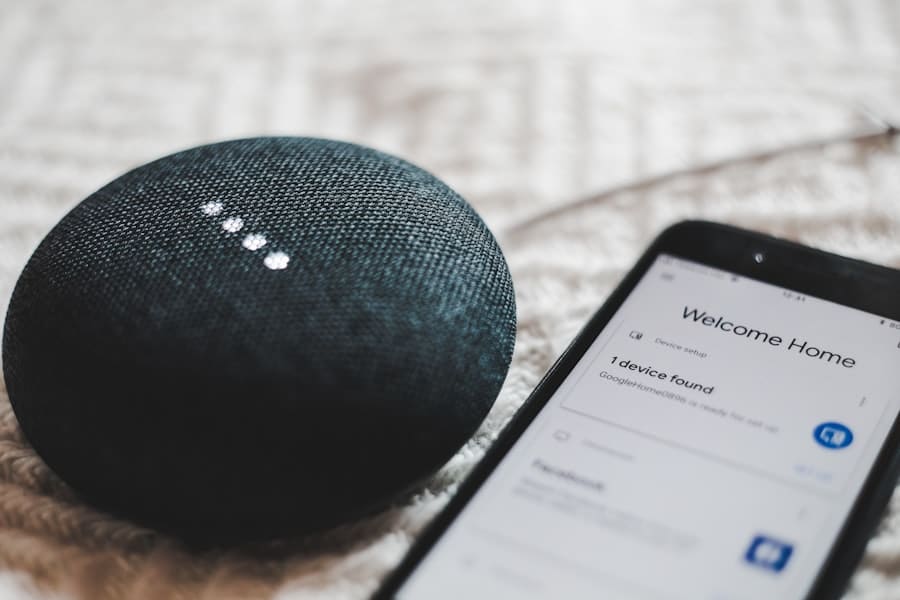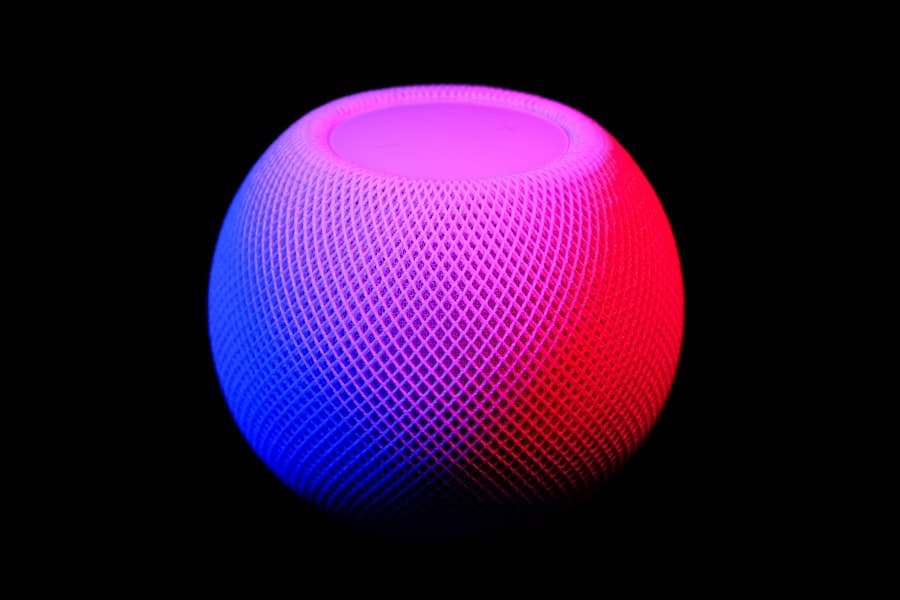In recent years, the landscape of home office systems has undergone a significant transformation, largely driven by advancements in technology. Among these innovations, voice-based systems have emerged as a pivotal component, enabling users to interact with their devices and applications through natural language. This shift towards voice recognition technology has not only enhanced user experience but has also streamlined various tasks, making remote work more efficient and accessible.
As more individuals and organizations embrace remote work, the integration of voice-based systems into home office setups has become increasingly prevalent. Voice-based home office systems leverage artificial intelligence (AI) to facilitate communication, task management, and information retrieval.
From scheduling meetings to controlling smart home devices, the capabilities of voice-based systems are vast and varied. As we delve deeper into the evolution and impact of AI in these systems, it becomes clear that they are not merely a convenience but a transformative force in the way we approach work from home.
Key Takeaways
- Voice-based home office systems are becoming increasingly popular as AI technology continues to evolve.
- AI has significantly improved the functionality and capabilities of voice-based home office systems, making them more efficient and user-friendly.
- Despite the benefits, there are still challenges and limitations to AI in voice-based home office systems, such as accuracy and privacy concerns.
- AI has the potential to greatly improve efficiency and productivity in home office systems by automating tasks and providing personalized assistance.
- The future of AI in voice-based home office systems looks promising, with continued advancements in technology and integration with other smart home devices.
The Evolution of AI in Home Office Systems
Advancements in Voice Recognition
However, as computational capabilities advanced and machine learning techniques evolved, the accuracy and functionality of voice recognition systems improved dramatically. The introduction of natural language processing (NLP) allowed these systems to understand context, nuances, and even regional dialects, making them more user-friendly and effective.
Major Tech Companies’ Investment in AI
In recent years, major tech companies have invested heavily in developing sophisticated AI algorithms that power voice-based home office systems. For instance, platforms like Amazon Alexa, Google Assistant, and Apple’s Siri have become household names, each offering unique features tailored to enhance productivity in a home office environment.
Seamless Integration and Efficient Workspaces
These advancements have not only made voice recognition more reliable but have also expanded the range of tasks that can be accomplished through voice commands. As a result, users can now seamlessly integrate their voice-based systems with various applications and devices, creating a cohesive and efficient workspace.
The Benefits of AI in Voice-Based Home Office Systems

The integration of AI into voice-based home office systems brings forth a multitude of benefits that significantly enhance the remote work experience. One of the most notable advantages is the increased efficiency in task management. Users can delegate tasks such as setting reminders, scheduling meetings, or sending emails simply by speaking commands.
This hands-free approach allows individuals to multitask effectively, reducing the time spent on administrative duties and enabling them to focus on more critical aspects of their work. Moreover, AI-driven voice systems can learn from user interactions over time, adapting to individual preferences and improving their responsiveness. This personalization enhances user satisfaction as the system becomes more attuned to specific needs and workflows.
For example, if a user frequently asks for updates on specific projects or tasks, the AI can prioritize this information and provide timely reminders or summaries. This level of customization not only boosts productivity but also fosters a more intuitive working environment where technology aligns with human behavior.
The Challenges and Limitations of AI in Voice-Based Home Office Systems
Despite the numerous advantages that AI brings to voice-based home office systems, several challenges and limitations persist. One significant concern is the accuracy of voice recognition technology, which can be influenced by various factors such as background noise, accents, and speech patterns. In a bustling home environment, for instance, external sounds may interfere with the system’s ability to accurately interpret commands, leading to frustration for users who rely on these tools for efficiency.
Additionally, there are concerns regarding the limitations of AI in understanding context and intent. While advancements in NLP have improved comprehension capabilities, there are still instances where the system may misinterpret commands or fail to grasp nuanced requests. This can result in errors that disrupt workflow or require additional time to rectify.
Furthermore, users may find themselves needing to adjust their speech patterns or enunciate more clearly to ensure accurate recognition, which can detract from the seamless experience that voice-based systems aim to provide.
How AI Improves Efficiency and Productivity in Home Office Systems
AI plays a crucial role in enhancing efficiency and productivity within voice-based home office systems by automating routine tasks and providing intelligent assistance.
This automation eliminates the back-and-forth communication often required when coordinating meetings, allowing users to allocate their time more effectively.
Moreover, AI-driven analytics can provide insights into work patterns and productivity levels. By analyzing data related to task completion times and user interactions with various applications, these systems can identify areas for improvement and suggest strategies for optimizing workflows. For instance, if a user consistently takes longer than average to complete specific tasks, the system might recommend breaking those tasks into smaller steps or allocating dedicated time slots for focused work sessions.
This data-driven approach empowers users to make informed decisions about their work habits and ultimately enhances overall productivity.
The Future of AI in Voice-Based Home Office Systems

Looking ahead, the future of AI in voice-based home office systems appears promising as technology continues to evolve at an unprecedented pace. One potential development is the integration of advanced machine learning algorithms that enable even greater personalization and adaptability. As these systems gather more data about user preferences and behaviors, they will become increasingly capable of anticipating needs and providing proactive assistance.
Additionally, the convergence of AI with other emerging technologies such as augmented reality (AR) and virtual reality (VR) could revolutionize the way we interact with our home office environments. Imagine a scenario where users can engage with virtual assistants in immersive settings, utilizing voice commands to manipulate digital objects or access information seamlessly within their workspace. This integration could redefine collaboration among remote teams, fostering a sense of presence and engagement that transcends traditional video conferencing tools.
Security and Privacy Concerns with AI in Home Office Systems
As with any technology that relies on data collection and processing, security and privacy concerns are paramount when it comes to AI in voice-based home office systems. These systems often require access to sensitive information such as personal schedules, emails, and even financial data. Consequently, ensuring robust security measures is essential to protect users from potential breaches or unauthorized access.
Moreover, there is an ongoing debate regarding data privacy and how user interactions with voice-based systems are stored and utilized by companies. Many users may be unaware that their voice commands are recorded and analyzed to improve system performance or develop targeted advertising strategies. This lack of transparency raises ethical questions about consent and user agency in an increasingly interconnected digital landscape.
As organizations implement AI-driven solutions in their home office setups, they must prioritize user privacy by adopting clear policies regarding data usage and providing options for users to control their information.
Implementing AI in Voice-Based Home Office Systems: Best Practices and Considerations
When implementing AI in voice-based home office systems, organizations should consider several best practices to maximize effectiveness while minimizing potential pitfalls. First and foremost, it is crucial to assess the specific needs of users within the organization. Understanding how employees interact with technology can inform decisions about which voice-based tools will best support their workflows.
Training sessions can also play a vital role in ensuring that users are comfortable with new technologies. Providing comprehensive onboarding programs that familiarize employees with voice commands and system capabilities can enhance adoption rates and reduce frustration associated with learning curves. Additionally, organizations should encourage feedback from users regarding their experiences with voice-based systems.
This feedback loop can help identify areas for improvement and inform future updates or enhancements. Furthermore, organizations must remain vigilant about security protocols when integrating AI into their home office environments. Implementing strong authentication measures, such as multi-factor authentication or biometric verification, can help safeguard sensitive information from unauthorized access.
Regular audits of data usage practices will also ensure compliance with privacy regulations while fostering trust among users who rely on these technologies for their daily tasks. In conclusion, as voice-based home office systems continue to evolve through advancements in AI technology, they hold immense potential for transforming how we work remotely. By understanding both the benefits and challenges associated with these systems, organizations can harness their capabilities effectively while addressing concerns related to security and privacy.
Through thoughtful implementation strategies and ongoing user engagement, businesses can create an environment where technology enhances productivity without compromising individual rights or data integrity.
In a related article, Enicomp explores the top trends in e-commerce business in their article Top Trends in E-Commerce Business. This article delves into the latest advancements and strategies that are shaping the e-commerce landscape, providing valuable insights for businesses looking to stay ahead in the digital marketplace. As companies continue to adapt to the changing consumer behavior and preferences, understanding these trends is crucial for success in the competitive e-commerce industry.
FAQs
What is AI?
AI, or artificial intelligence, refers to the simulation of human intelligence in machines that are programmed to think and act like humans. This includes tasks such as learning, problem-solving, and decision-making.
How does AI enable voice-based home office systems?
AI enables voice-based home office systems by using natural language processing (NLP) to understand and respond to voice commands. AI algorithms can interpret and process spoken language, allowing users to control various home office devices and applications using their voice.
What are the benefits of using AI in voice-based home office systems?
The use of AI in voice-based home office systems offers several benefits, including hands-free operation, increased productivity, and improved accessibility for individuals with disabilities. AI can also learn and adapt to users’ preferences over time, providing a more personalized and efficient experience.
What are some examples of AI-powered voice-based home office systems?
Examples of AI-powered voice-based home office systems include virtual assistants like Amazon’s Alexa, Apple’s Siri, and Google Assistant. These systems can perform tasks such as setting reminders, scheduling appointments, controlling smart home devices, and providing information through voice commands.
What are the potential challenges or limitations of AI in voice-based home office systems?
Challenges and limitations of AI in voice-based home office systems may include privacy concerns related to voice data collection, accuracy and reliability of voice recognition, and potential security vulnerabilities. Additionally, AI systems may struggle to understand certain accents or dialects, leading to communication barriers for some users.

